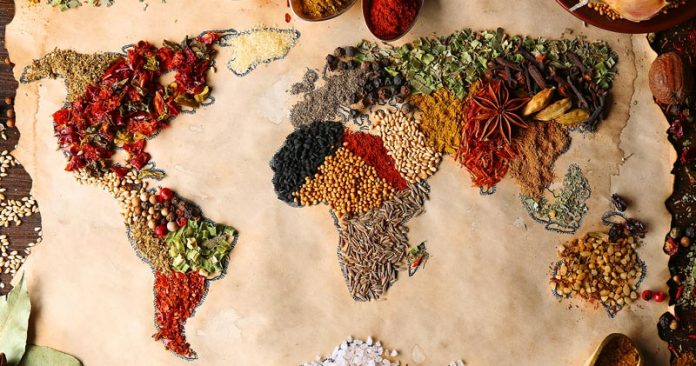The Trump administration will put tariffs on steel and aluminum imports from Canada, Mexico and the European Union, the latest action in a string of protectionist policies to crack down on alleged trade abuses.
The tariffs of 25 percent on steel imports and 10 percent on aluminum imports will take effect at midnight Thursday, Commerce Secretary Wilbur Ross told reporters. The U.S. gave those allies a reprieve from the duties, but the exemptions were set to expire Friday. The Trump administration will place quotas or volume limits on other countries such as South Korea, Argentina, Australia and Brazil instead of tariffs, he said.
Condemnation from U.S. allies poured in immediately Thursday. European Commission President Jean-Claude Juncker called the tariffs “unjustified” and said the EU will introduce countermeasures in the coming hours. A spokesperson for the British government also said the U.K. is “deeply disappointed” in the move and added U.S. allies “should be permanently and fully exempted” from the tariffs. Mexico also said it would impose tariffs in response to the U.S. actions.
The Trump administration move is only its latest in a series of actions targeting foreign countries’ trade practices that escalates the chances of a trade war with major world economies. Trump has repeatedly promised to crack down on trade habits that he says harm American companies and sap U.S. jobs.
In a proclamation announcing the measures, Trump wrote that he agreed with Ross’ “finding that steel mill articles are being imported into the United States in such quantities and under such circumstances as to threaten to impair the national security of the United States.” American steel and aluminum producers have cheered the Trump administration’s metals tariffs, and shares of companies such as U.S. Steel and AK Steel surged Thursday.
Meanwhile, the prospect of more protectionism led the Dow Jones industrial average and to hit their lows for Thursday trading after the news. The U.S. dollar also approached a session high against the Canadian dollar and Mexican peso.
The actions come as the U.S. tries to strike a revised North American Free Trade Agreement deal with Canada and Mexico, and settle other trade concerns with the EU. It will increase tensions with allies even as the U.S. seeks help to address alleged trade abuses by China.
The Commerce secretary said the exemptions would end in part because NAFTA talks are “taking longer than we had hoped.” Negotiations with Europe have “made some progress” but not gone far enough to warrant more relief from the tariffs, he added.
“We look forward to continued negotiations both with Canada and Mexico on the one hand, and with the European Commission on the other hand, because there are other issues that we also need to get resolved,” Ross said.
Punitive tariffs the Trump administration has proposed on Mexican imports may want to have an effect on the backside line of many eating places in each the short and medium term, according to economists and pricing specialists.
The administration ultimate week threatened to impose a 5% tariff on imports from Mexico beginning June 10, growing to 15% in August, 20% in September and 25% in October, “unless and until Mexico drastically stops the unlawful influx of aliens coming through its territory,” the White House stated in a statement.
In the short term, that could have an effect on food costs, as about 43% of all fruit and vegetable imports into the United States come from Mexico, in accordance to a 2016 report from the University of California at Davis.
Avocados and tomatoes are the biggest import product categories from Mexico, however U.S. organizations also purchase a lot of Mexican cucumbers, watermelons, chiles, limes, squash, bell peppers, onions, mangoes, papayas and strawberries, in accordance to the U.C. Davis report
The United States also yearly imports $3.6 billion in beer and wine (mostly beer) and $1.6 billion in alcohol — plenty of it tequila — according to U.S. exchange data.
Chipotle Mexican Grill said closing week the proposed tariffs should cost the organisation $15 million and would possibly lead it to elevate prices, perhaps adding 5 cents to each burrito.
“The Mexican scenario is analogous to a tax. It’s just about paying more,” commodities analyst John Barone, president of Market Vision Inc., said in an email “It must now not affect product availability or grant chain, however it will have a big influence on value — especially fruits and vegetables.”
He introduced that avocados will be particularly tough hit as the bulk of our imports of that fruit comes from Mexico.
Peak availability of California avocados is April thru July, according to its alternate association. After that will increase of avocado expenses would be based totally without delay on the proportion of the tariff, Barone said.
If tariffs have been to continue into the winter, produce expenditures would be especially affected as U.S. production diminishes and the need for Mexican imports increases, said Sebastián Fernández, chief research and development officer at consulting firm Revenue Management Solutions.
Although a good deal of the situation has been targeted on how the tariffs would affect restaurants serving Mexican food, Fernández pointed out that tomatoes, avocados and other imports from Mexico are in huge use throughout all segments.
Then there’s the threat of improved tariffs not simply on imports from Mexico, but from China and Europe, negatively affecting the economic system as a whole, professionals warned.
According to the Tax Foundation, a think-tank that analyzes implications of tax policy, tariffs planned and imposed so some distance via the Trump administration would minimize gross home product through $50.31 billion, or 0.2%, and get rid of almost 156,000 jobs. Additional tariffs threatened on China and Mexico would similarly hit the GDP by means of 0.5%, it said, removing extra than 385,000 jobs.
Macroeconomic influences like that would in all likelihood hit casual-dining and upscale eating places as customers tightened their belts, although it ought to be a boon for quick-service chains and others competing on price.




